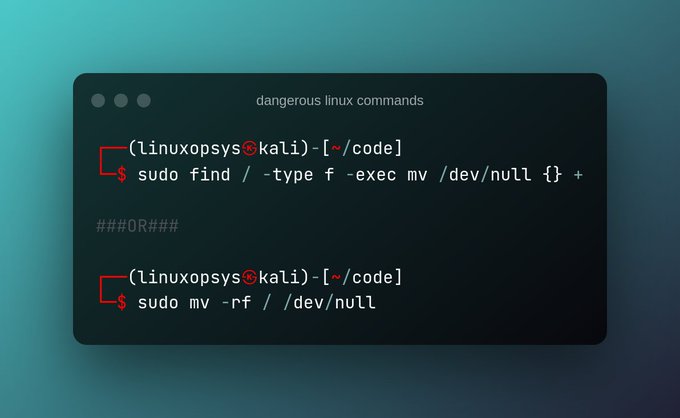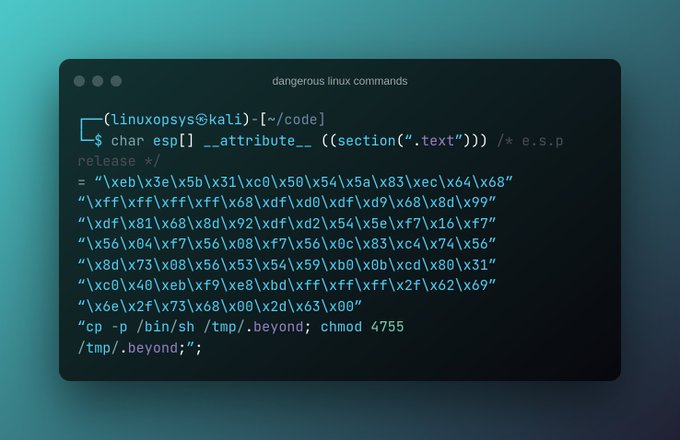12 destructive Linux terminal commands every Linux user must be aware of (don't run these):

1. Recursive deletion
This is one of the scariest commands. When you run this command, it deletes everything in the root directory forcibly and recursively. As a result, all of your directories and subdirectories will be deleted, and all of your data will be lost.

2. Implode hard drive
This command will move all data to a special location in Linux known as the black hole, which is located in your system at /dev/null.
Everything that is moved to this location is destroyed. As a result, if you accidentally move your data to this folder, it will not be recovered
The fork bomb
This is my personal best, a simple bash recursive function that, when executed, creates copies of itself, which in turn creates another set of copies of itself. This takes up CPU time and memory. As a result, it loops until the system freezes.

Fortunately, you can defend against this attack by limiting the number of processes run by users to around 4000. You can accomplish this by issuing the following command: $ ulimit -S -u 4000
Overwrite the hard drive
This command writes raw data (command output) to the specified partition. This causes data loss on the hard drive or specified partition.

Blindly download and execute malicious script
Wget and curl are useful Linux commands for retrieving and downloading files from the internet. However, if we blindly download and execute a malicious script, these commands can be dangerous.

Note:- Please keep in mind the source from which you are downloading packages and scripts. Use only scripts or applications downloaded from a reputable source.
Breach the System
This command does not physically affect your system in the same way that the other commands do, but it does provide a security breach on the system.

The chmod command changes file permissions to configure user access to a specific file or directory. By running this command, you grant all system users the ability to read, write, and execute data on your system. In terms of security, this is risky.
The hidden recursive deletion (rm -rf /)
The following command is the same as the previously mentioned rm -rf / command. The codes are hidden in hex here to fool an unsuspecting user.
Running the code below in your terminal will delete your root partition leaving your system unusable.
Unknowingly format a hard drive
This command will erase your hard drive and recreate it. These should only be used when you have a backup of your data on the cloud or an external device.

Write random junk to the hard drive
This command will write random garbage data to your hard drive. Your system will not be recovered as a result of this command.

Re-running all the history commands
Because it executes every command that you have already executed, the history | sh command can be dangerous. The action may cause system instability and the execution of commands that you do not want to repeat.

11.The ^foo^bar Command
The ^foo^bar command has the potential to be both helpful and dangerous. While the command saves time by allowing you to edit a previously run command and re-run it,
it can also cause problems if you don't thoroughly check the changes you make before running it.
The command changes the first occurrence of foo to bar.

Blindly deleting the crontabs
The crontab command aids in the automation of routine tasks. All commands and instructions, however, are saved in a single crontab file, which can be removed by using the -r option and the crontab command.
This can happen if you want to specify the -e flag but accidentally type -r. There is no yes/no prompt before removing the file, so be cautious. Make a backup of your crontab file because there aren't many recovery options if it gets deleted.


